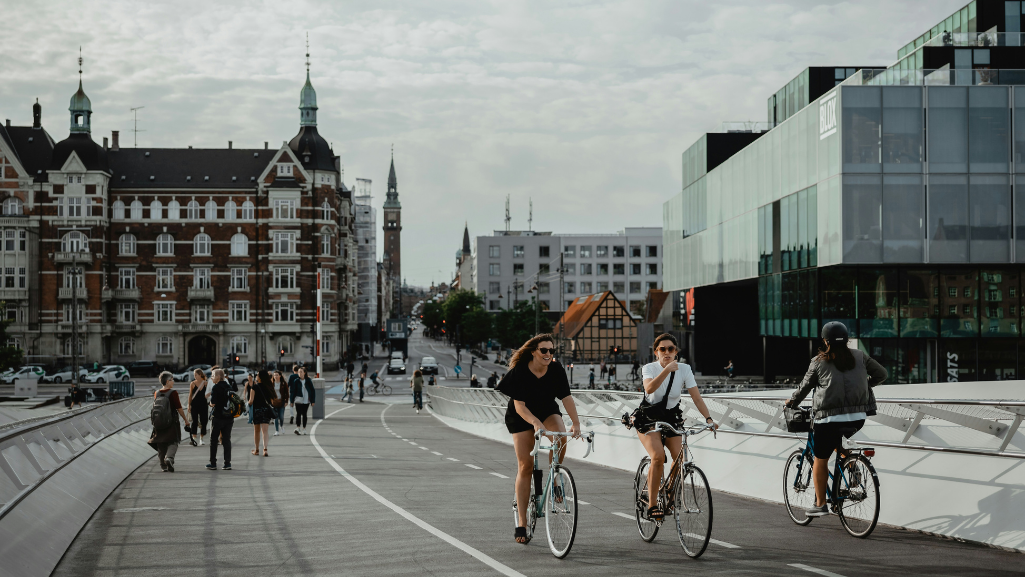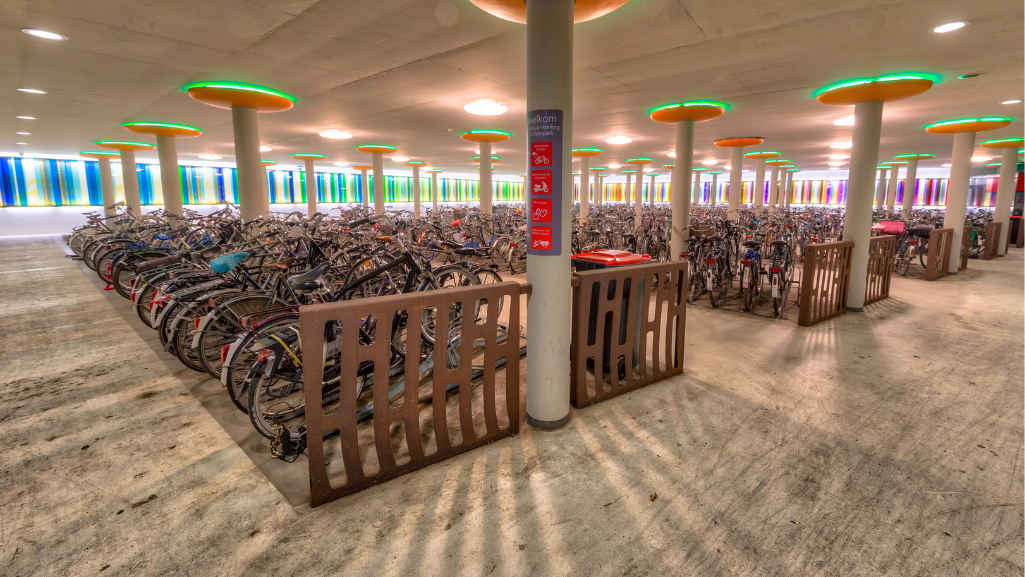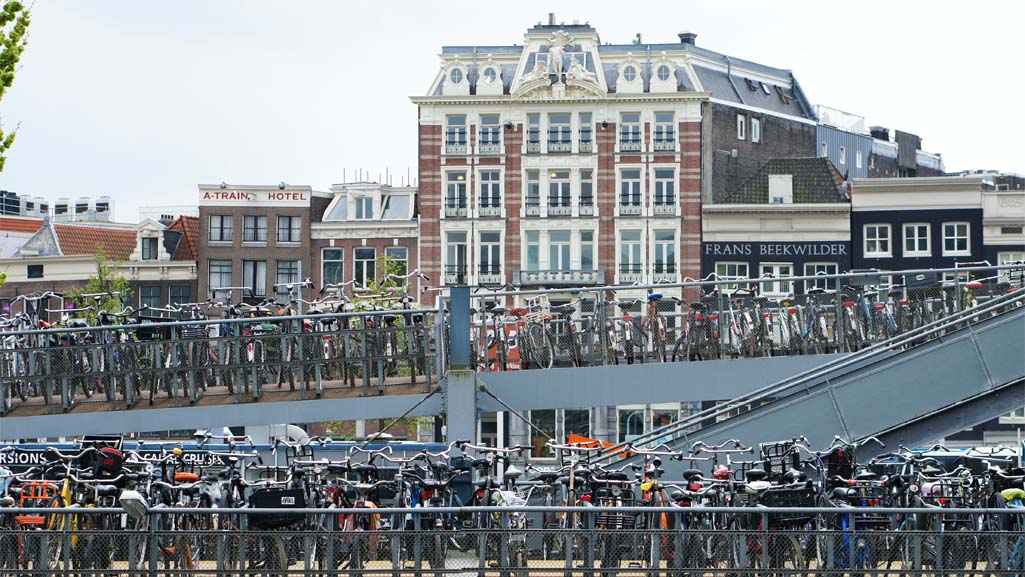Table of contents
As sustainability and health become more critical than ever, cycling has gained popularity as a preferred mode of transportation. Not only does it help reduce carbon footprints, but it also fosters a healthier lifestyle.
However, cities around the world vary significantly in their commitment to bicycle infrastructure and culture. In this article, we look at some of the most bike-friendly cities in the world. In these places, cycling is not just a hobby; it’s a way of life.
5 Best cycling towns
1. Copenhagen, Denmark
Copenhagen consistently tops rankings of the most bikeable cities, including the renowned Copenhagenize Index. According to the Cycling Embassy of Denmark, the city boasts five times more bikes than cars.
Biking in Copenhagen is very easy. The city has 546 kilometers of bike paths. More than 62% of residents ride bikes to work. This shows that cycling is a big part of the city’s culture.
On average, Copenhageners cycle 3 km daily, citing efficiency as the primary reason—they simply find it the fastest and most effective way to get around.
Copenhagen bike lanes
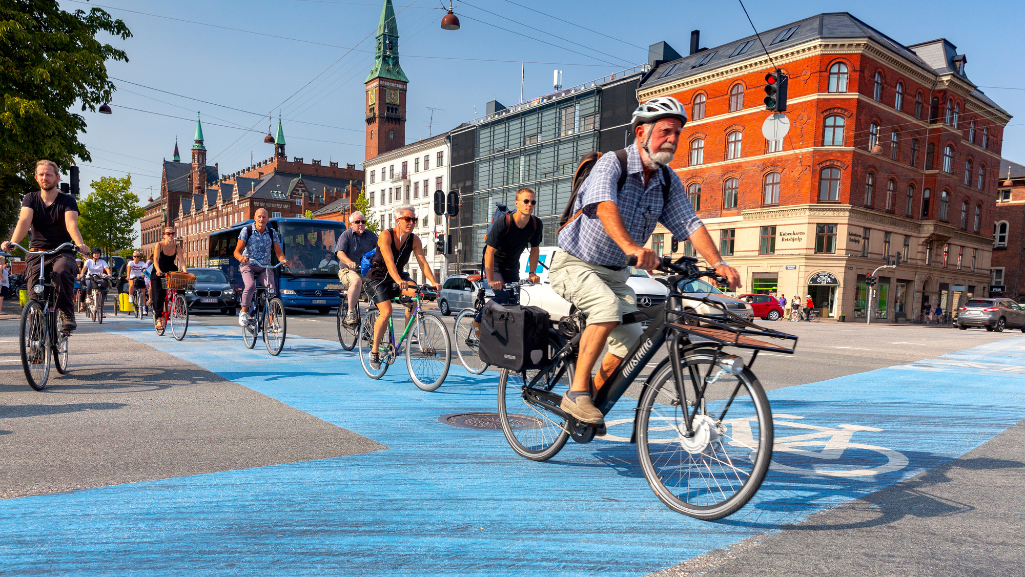
This is no accident. Over the past decade, Copenhagen has invested more than $200 million in cycling infrastructure. The planned network of cycle superhighways in the greater Copenhagen region is designed to prioritize commuters with total a length of more than 850 kilometers.
“Here, bicycle paths are separated from motorized traffic by a curb. Some places, we also use parked cars to create a kind of protective wall from the traffic flow. In general, however, we believe that a completely separated infrastructure is indispensable for daily bicycling in the city,” explained Klaus Bondam, former director of the Danish Cyclist Federation in an interview Bicycle Playbook.
This confirms that those who create safe, good infrastructure for cyclists attract them. Copenhagen strategically built this up years ago and also also used simulation tools to do so. With the PTV Vissim micro-simulation, the city was able to assess which measures would benefit cycling.
2. Utrecht, Netherlands
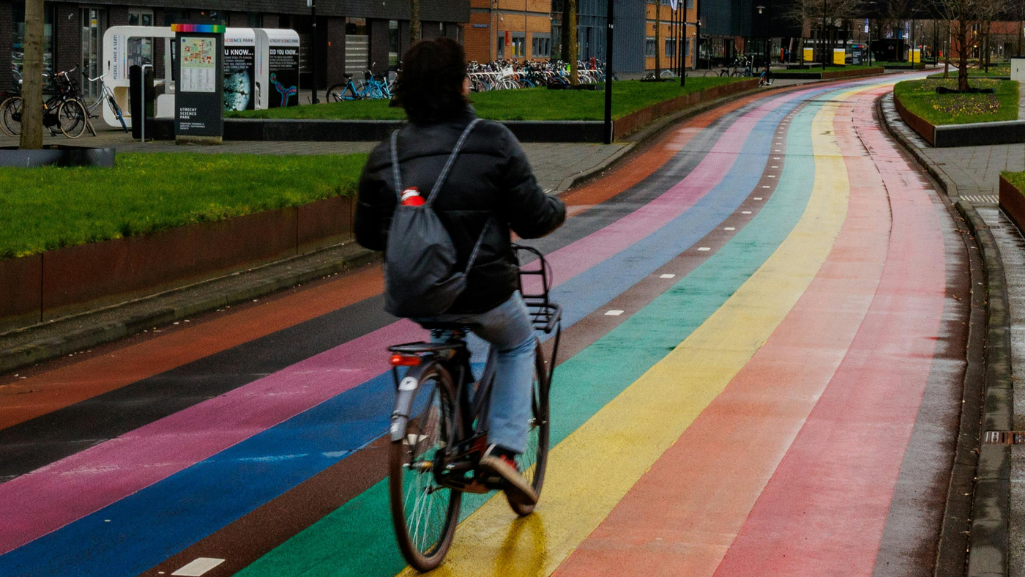
Synonymous with cycling, the Netherlands has over 35,000 km of cycle paths and is often named as most bike-friendly country on the globe. While Amsterdam is well-known for its great number of bikes – with estimated 881,000 compared to 821,000 inhabitants – Utrecht consistently ranks as the nation’s top cycling city.
With 420 km of bicycle paths, 56% of residents use bikes for city travel. 33,000 cyclists ride along the city’s busiest route every day.
Utrecht also exemplifies the synergy between public transit and biking. The city is home to the world’s largest bike parking facility. It can accommodate 12,500 bicycles, making multi-modal transportation an easy and sustainable choice for residents.
3. Singapore
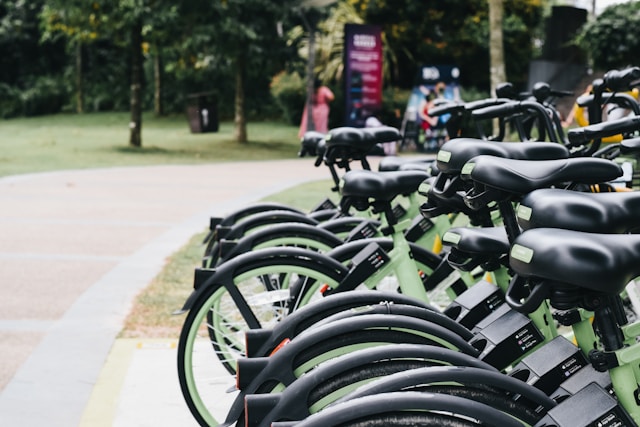
People hail Singapore as Asia’s most bikeable destination. Driven by its “Car-Lite” vision the city state aims to reduce car dependency and promoting sustainable transportation.
The city has made significant investments in dedicated bike infrastructure and built over 500 kilometers of bike lanes. And there are plans to expand this network to 1,300 kilometers by 2030. Extensive bicycle parking is available at MRT stations and bus interchanges, encouraging multi-modal transportation.
Many roads in Singapore have special cycling lanes. They are separated from cars by barriers or clear markings to keep cyclists safe.
The cycling paths are well-lit, equipped with signposts, and designed with safety in mind, especially at intersections where accidents are more likely. To ensure that the cycling infrastructure meets cyclists’ needs, Singapore has employed VR bicycle simulators, based on PTV software. This allowed citizens to virtually experience and provide input on the design of planned bicycle lanes.
4. Paris, France
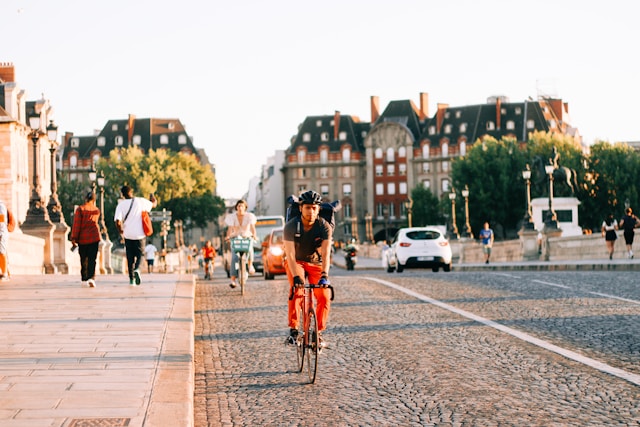
Paris has seen a remarkable transformation into one of the world’s most bikeable cities over the past decade. Between October 2022 and October 2023, bicycle usage in the city doubled.
This shift is mainly because of Mayor Anne Hidalgo’s strong support for cycling. She has the vision of of making Paris a “15-minute city,” where residents can reach most amenities by foot or bike within 15 minutes.
In 2015, Hidalgo first started advancing Paris’s cycling plan with 150 million euros invested to double the number of cycling lanes.
During the COVID-19 pandemic, the city developed a vast network of bike lanes, known as “coronapistes” to promote cycling. Due to their popularity, many of these temporary lanes have become permanent. In preparation for the Olympic Games 2024, the city has expanded its cycling infrastructure even further. Today, Paris boasts over 1,000 kilometers of cycling paths, with plans to continue expanding the network.
Additionally, there is a strong bike share program. Paris’ Vélib’ Métropole is one of the largest and most successful bike-sharing systems in the world. It offers both regular and electric bikes. With over 1,400 stations across the city, residents and tourists alike can easily access bikes for convenient travel.
5. Bogotá, Colombia
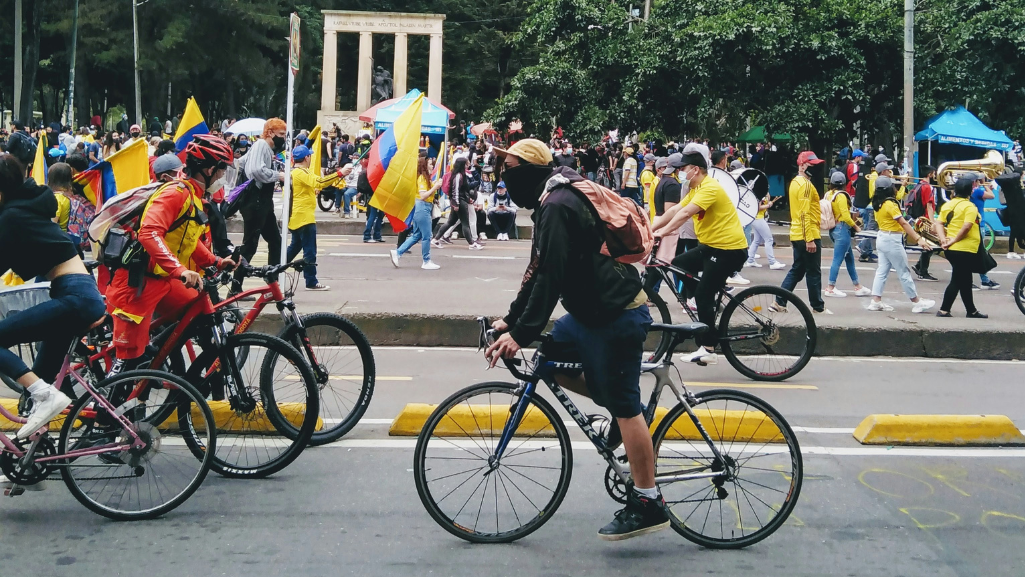
Bogotá has been a pioneer in promoting cycling for decades. The city’s “Ciclovía,”, dating back to the 1970ths, is iconic. Major roads are closed to cars every Sunday. This event still attracts around 1.5 million cyclists and pedestrians each week.
This initiative has played a key role in fostering a strong biking culture.
The city started focusing on cycling infrastructure under former mayor Enrique Peñalosa in the late 1990s. They created 300 kilometers of bike paths during this time. The COVID-19 pandemic in 2020 further accelerated Bogotá’s efforts to become more bicycle-friendly. It provided the impetus to fast-track infrastructure improvements and experiment with new cycling routes.
Today, Colombia’s capital has over 600 kilometers of bike paths. These paths are separate from motor traffic. They provide cyclists with a safe and reliable way to get around the city.
Cycling in Bogotá serves as an affordable mode of transportation, particularly for low-income residents who cannot afford cars. The city has made it easier for everyone to reach jobs, education, and essential services.
What are the most bike friendly cities in the US?
While U.S. cities don’t typically rank among the world’s top cycling destinations, there are notable exceptions. According to the people for bike city rankings, the best cities for biking in the US are Minneapolis, MN, followed by Seattle, WA, and San Francisco, CA.
What country has the highest bicycle usage?
When looking at the bigger picture and asking what country is the most bike friendly, the Netherlands is the clear leader. There are more bicycles in the country than people—22 million bikes compared to a population of 18 million. According to the UN Environment Program, 43% of the Dutch population takes at least one bike ride each day. 26% are cycling a few times per week.
Cities like Amsterdam and Utrecht serve as global role models for building world-class cycling infrastructure.
How can cities become more bicycle friendly?
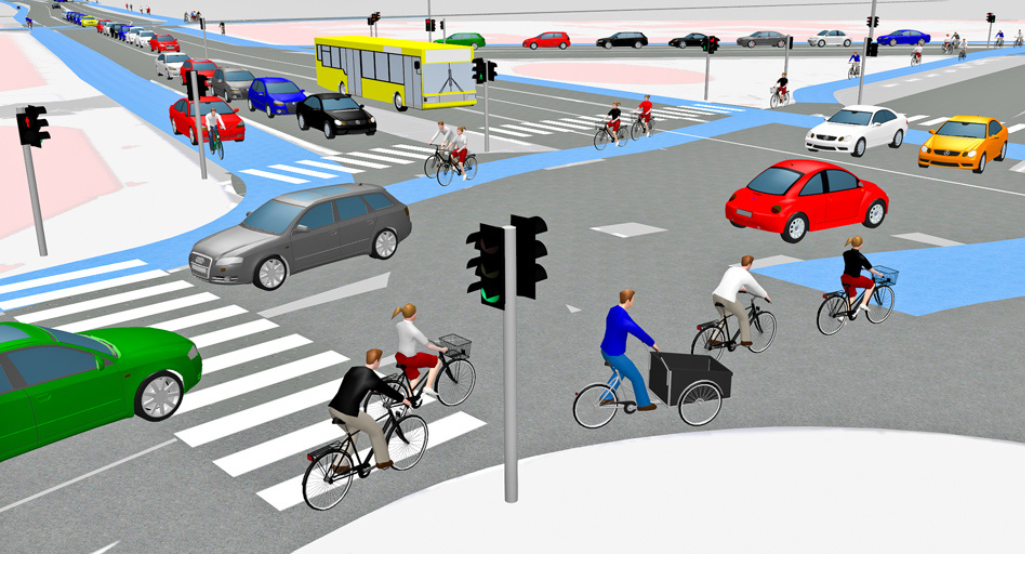
The cities listed here share a common approach: providing safe, efficient, and attractive infrastructure is key to encouraging cycling. Protected bike lanes, well-connected networks, and integration with public transportation make cycling a viable and appealing option.
Changing infrastructure to give cyclists more space often faces many concerns. For example, where will motor vehicle traffic go if I change a road for bicycles? How can we improve traffic lights so that cars and bicycles can travel from A to B quickly?
Digital transportation models can help can aid in strategic planning. In the modeling environment cities cities can assess potential, challenges and benefits of active mobility measures.
Tools like PTV Visum and PTV Vissim help transportation experts forecast how infrastructure plans will affect cycling. They also assist in creating a safe and efficient network design that encourages more people to ride bikes.

Bicycle Playbook
The Bicycle Playbook showcases why cycling is relevant to infrastructure planning. Get to know different concepts that can be implemented in your city or municipality to promote this eco-friendly mobility.

Simulations make Copenhagen the cycling capital
More than half of Copenhageners cycle every day. PTV Vissim’s microscopic simulations enable the city to realistically simulate and predict bicycle traffic and help redesign the infrastructure.
